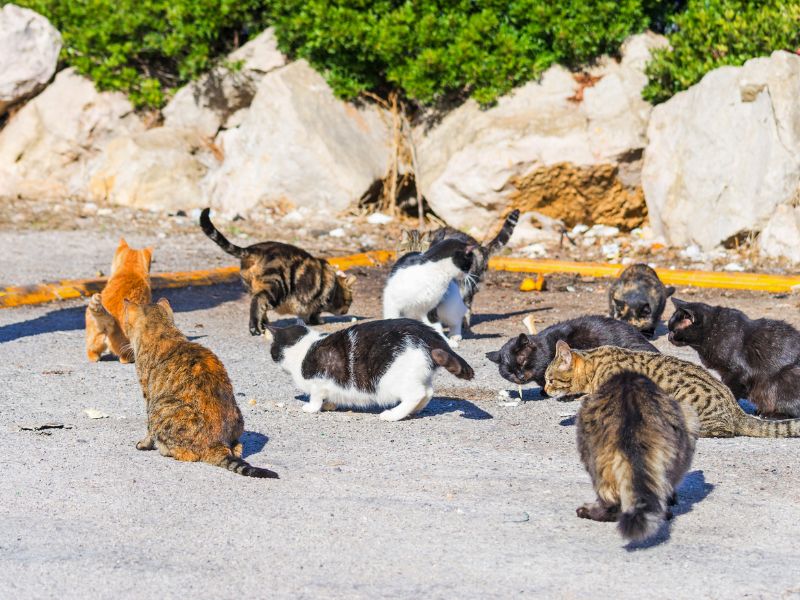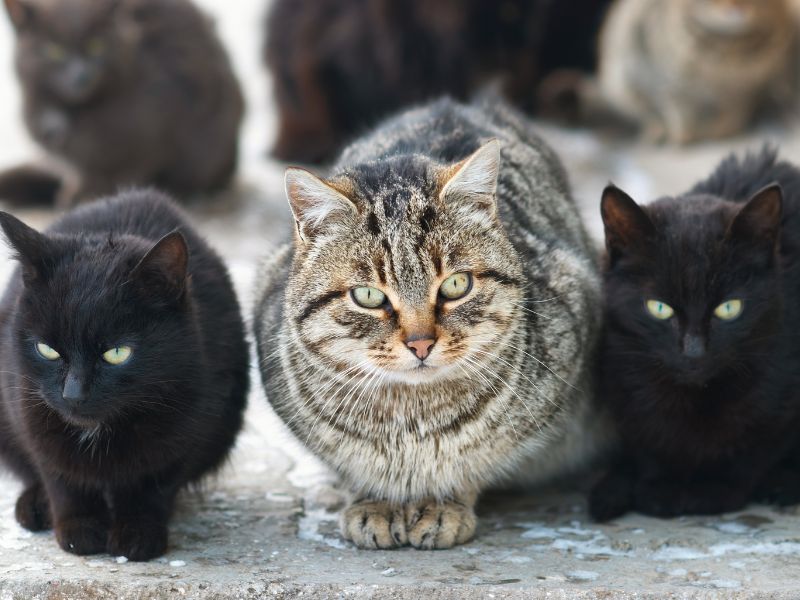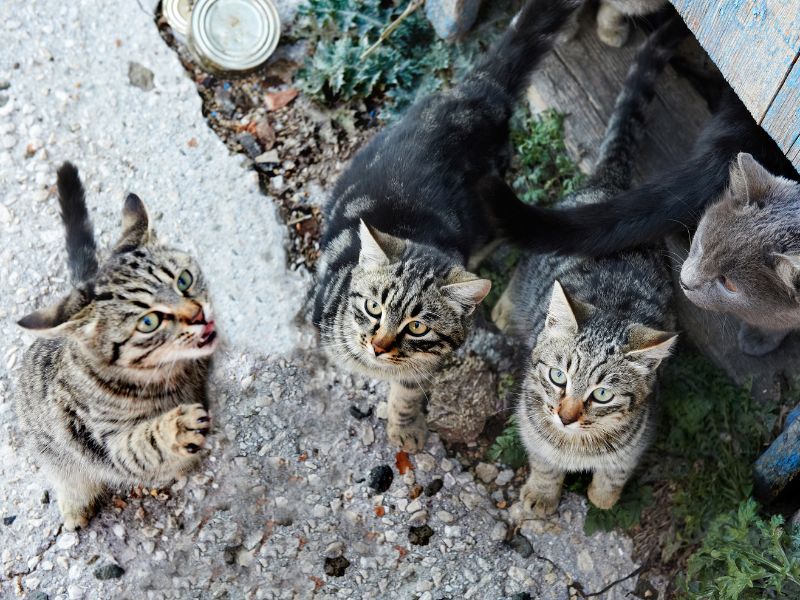Cats always have been an interesting species of animal. Domestic cats are especially interesting, which are cats tamed by humans to keep as pets. In the wild, many animals including wild and feral cats, especially Tigers and Lions, can form social groups of their own. Many people often wonder if this trait is similar as well with domestic cats. Here we will answer some questions about cats and domestic cats, and if domestic cats form social groups with one another. With that said, let us get into it with some of the questions we can answer.
Do Cats Have Social Groups?
Yes, out in the wild, cats do tend to form hierarchal groups with one another. Most cats form colonies with one another, with females and their kittens cooperating with one another to form a hunting territory. They make the territory by using a scent from their facial glands, urine, feces, and anal glands. This is to avoid confusion with one another which can lead to conflict. It helps them also to communicate with one another, too.
Not only that, but these territories also have different areas usually, which is very interesting when you look at it. The areas include a den, where they can feel safe enough to sleep without other predators or people coming after them. it also helps them socialize with one another and play with one another. This also goes with having a care area, which indicates it’s an area where they help one another with wounds and other things that may have happened to one of their own. These areas can often overlap with other areas, which can have negative consequences. If a cat enters that isn’t one of their own, they may also be greeted with a form of aggression and may attack that unfamiliar cat.

Is There an Alpha Cat in a Group?
Yes, there can be alpha cats or a cat. Usually, this is formed from the hierarchal structure of their social groups. The alpha cat or cats are usually mothers and are at the top with their kittens being below the group. The interesting bit is that there may be a larger central colony that is formed around all the female cats. Then there are smaller “colonies” of cats that live outside of that larger colony. Usually. they will still have access to the food in the larger colony, but not as easily as the female cats in the larger colony.
It should be noted that this may not happen all the time either. There are some cats that may choose to be alone since they can be solitary creatures. Most male cats are known to live in this smaller colony as well, since the offspring is usually part of the smaller groups around the bigger groups of the female mother cats. It should also be mentioned, that there are male territories as well but these territories again, are usually outside of the bigger female territory.
How Do You Know Who Is the Dominant Cat?
This can also be confusing since cats often operate in a matriarchal type of way. As mentioned before, it is usually the female mother cats that are the alpha or dominant cats of the colony. These mothers will usually play the dominant role with their offspring next in line. This then goes to younger male cats typically, who, as mentioned previously, live outside the colony in smaller subgroups.
The dominant cat may also use bunting on other cats that are lower in the hierarchy structure of the colony. This is just headbutting and is for scent purposes. The dominant female cat will look to spread its scent as far and as much as possible, which helps with claiming the property as its own.
Cats that are lower in the hierarchy may also rub the cats higher in the hierarchy (not bunting though), and the ones that are dominant never display this behavior either. The dominant cats may also eat first, and when they are done, then the less dominant cats can eat. They will bully other cats aside to do this, and edge them aside in order to gain access to the food first.

See Also: Why Does My Well Fed Cat Hunt?
And: Are Feral Cats Bigger Than Domestic Cats?
Do Younger Cats Respect Older Cats?
It really depends on the cat and the colonies of cats with this question. Typically, the older female mothers are higher up on the hierarchy, which therefore would mean that they are usually respected. This is usually displayed with bunting from the older dominant cats, and the younger, less dominant cats, allowing them to do this. This also goes with rubbing too – which cats on the lower end of the hierarchy tend to do to display obedience and respect to the older female cats.
But this isn’t always the case, and older female cats could act aggressively in order to display dominance. Cats tend to assert their dominance by threatening the other cats around and using posture displays. The cat will have its fur stand up on its back and have its back arched. This is an intimidation tactic displayed by dominant cats, as to get what they want, be it food, or whatever else. If more than one cat tries to display dominance, this can cause loud vocal warnings displayed by the cats, and often cause a fight.
So, if you are the owner of a few cats and see this display from one of the other cats – that cat is the dominant cat in the household. But it should be noted that it is imperative for your cats to get along and not fight with each other.
Conclusion
We answered the question “do cats gather together socially?” Amongst other questions, you may have about cats that form groups with one another. It is very interesting how these cats can form groups and a hierarchy of sorts around the older female cats. We hope we answered the questions you may have with this – and we hope it cleared up any confusion.
Featured image: A Group of Cats

